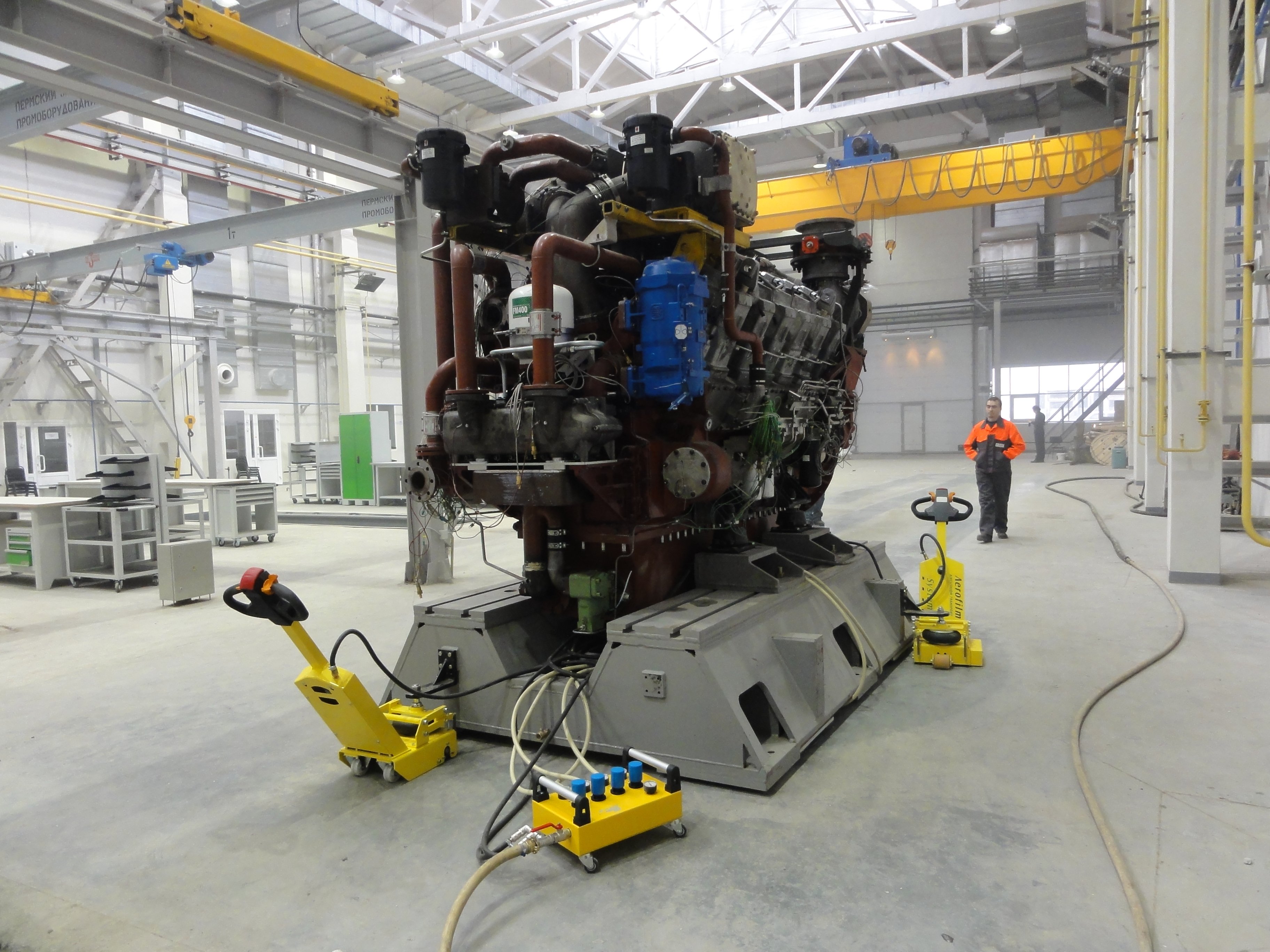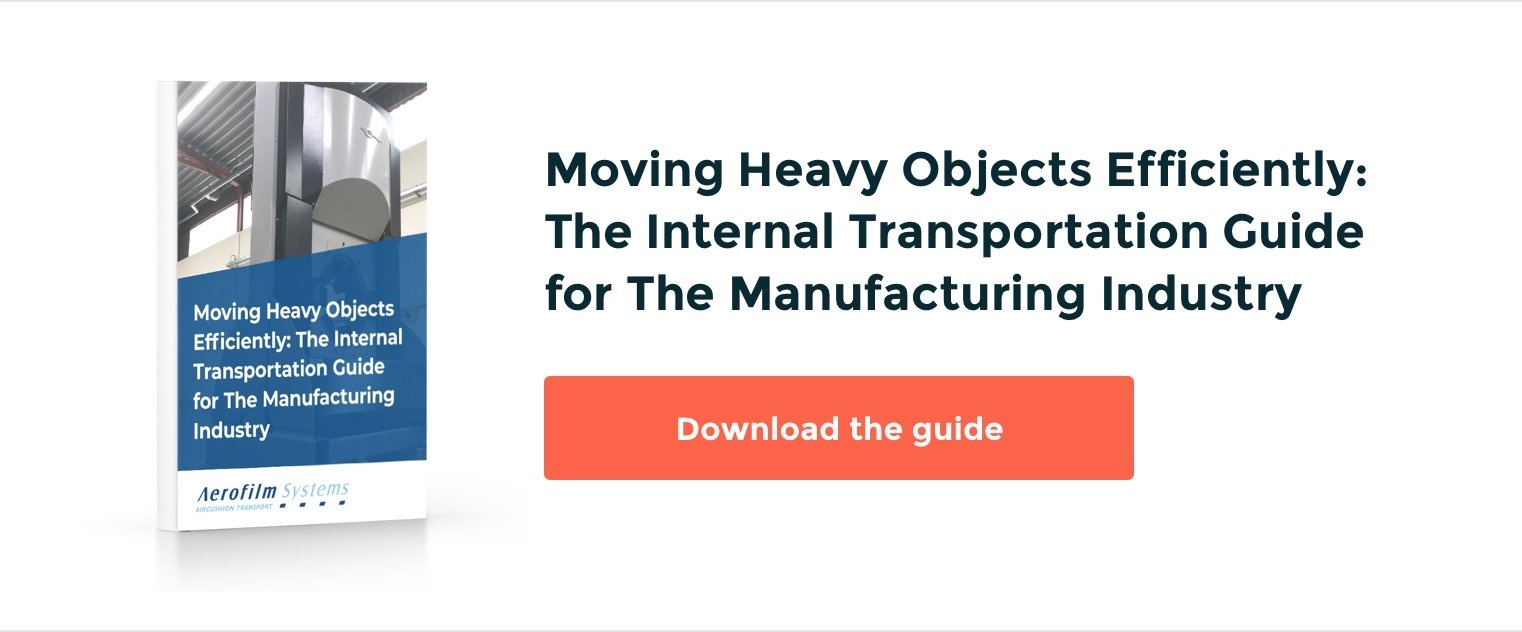Internal transport and lifting of heavy machinery within an industrial environment or production facility can be a real nightmare. It’s difficult to work out the logistics of the move — how not to damage other equipment or the capital-intensive and often delicate systems or goods itself, how to cope with limited space, how to position effectively and accurate, etc. And you also want to avoid doing it wrong, which can lead to serious injuries. However, you need to get the job done quickly and efficiently. In this blog, we tell you about how to move heavy machinery and introduce a solution that’s easy to handle, safe and cost-effective. Keep on reading to learn more! A tip of the veil: you don’t need heavy machinery to move the heavy machinery.
Constant needs to move heavy machinery
In a manufacturing setting, there are constant needs to move and position objects. Whether it’s about changing an assembly line setup, exchanging molds in the production line, moving components to machines, moving or positioning fixed machinery or semi-manufactured products or modules, it’s obviously not a matter of getting a bunch of strong guys together and pushing really hard.
There are many factors to take into account when it comes to selecting a solution for moving heavy objects, such as floor load capacity, ergonomic standards for employees, friction, and flexibility. Based on these requirements for your specific situation it is relatively easy to select the best solution for your business.
There are several solutions to move heavy machinery. For example, forklifts, machine skates, overhead and gantry cranes, rails, automated guided vehicles (AGV’s), and air casters. The latter is a powerful, yet a relatively unknown solution. Even though it has clear advantages over other solutions.
Air casters: the safest, ergonomic, and cost-effective solution for moving heavy machinery
Air casters — also called air cushions, air skates or air bearings — provide powerful solutions, but actually, operate under fairly simple principles. In short, air skates lift heavy loads and generates a nearly frictionless layer between the surface and load but I’ll explain the technique behind this solution in more detail.
Compressed air is inflated into the air casters — consisting of a flexible rubber membrane and a metal plate — and a controlled ‘leakage’ of the compressed air creates a thin air film between the floor and the air caster. As a result, the air caster ‘floats’ above the floor, similar to that of a hovercraft. Heavy objects can now be moved with practically no friction and very little force. It requires only one kg of pulling force to move a weight of 1,000 kg.
Compared to traditional moving solutions air casters offer:
- 360 degrees of rotation, omnidirectional manoeuvrability in tight spaces and positioning in all horizontal directions
- Minimal friction which requires less drive force
- Robust product components parts that are virtually maintenance-free
- Easy placement under loads without additional load jacking due to low construction height of the air skates
- Low floor loading because the weight is distributed over a wide surface area instead of point or line contact
- Custom-made solutions for the specific objects that need to be transported from 100 kg to thousands of tons
On top of that air casters are commonly used in cleanrooms and explosion-proof rooms.
But, and there’s a but, there are two requirements for the use of air casters: a suitable floor and compressed air. The right kind of floor for air caster movement is airtight, smooth and flat. However, an unsuitable floor can (temporarily) be improved. The principle of air casters is, obviously, based on air. Therefore, you need sufficient air pressure and flow available at all times.
Your opportunity of moving heavy objects with air caster systems
Your internal transport solution demands for reliable floor load capacity, ergonomic standards for employees, friction-free movement, and flexibility of positioning.
You want to know more on how air caster systems incorporate all the demands in your internal transportation solution? In the Internal Transportation Guide you'll discover the working and requirements of air caster systems as transport solution for your company.



